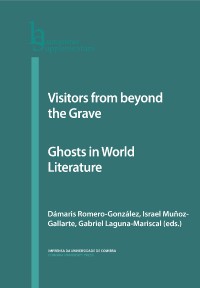Please use this identifier to cite or link to this item:
https://hdl.handle.net/10316.2/47502| Title: | The Moroccan jinn in the Anglo-American literary and ethnographic tradition | Authors: | Porras Sánchez, María | Keywords: | jinn;ghost;Paul Bowles;Tahir Shah;Moroccan folklore;Western readership. | Issue Date: | 2019 | Publisher: | Imprensa da Universidade de Coimbra | Abstract: | In the Arab culture, the jinn (pl. jnūn) is a spirit that can assume various forms and exercise supernatural powers. In Morocco, it is a fundamental figure of the local folklore. As such, it has attracted the attention of different field anthropologists throughout the 20th century such as Westermarck or Capranzano, who studied the jnūn and their relationship with religious brotherhoods and devoted a monograph to A’isha Qandisha, a seductive jinniya or female jinn very popular in Morocco. However, jnūn have also attracted the attention of literary authors, as is the case of the American expatriate Paul Bowles, who frequently included them in his short fiction and claimed they existed as projections of common belief. More recently, the Anglo-Afghan travel writer Tahir Shah has explored the supposed presence of jnūn in Moroccan daily life in his works The Caliph’s House (2006) and In Arabian Nights (2008). I intend to explore the figure of the jinn as portrayed by all these authors, focusing on how they contribute to preserve this element of Moroccan folklore while at the same time they (re)produce it for a Western readership. | URI: | https://hdl.handle.net/10316.2/47502 | ISBN: | 978-989-26-1765-7 (PDF) 978-989-26-1763-3 |
DOI: | 10.14195/978-989-26-1765-7_16 | Rights: | open access |
| Appears in Collections: | Visitors from beyond the grave: ghosts in world literature |
Files in This Item:
| File | Description | Size | Format | |
|---|---|---|---|---|
| the_moroccan_jinn_in_the_anglo-american_literary.pdf | 352.04 kB | Adobe PDF |  |
Items in DSpace are protected by copyright, with all rights reserved, unless otherwise indicated.
